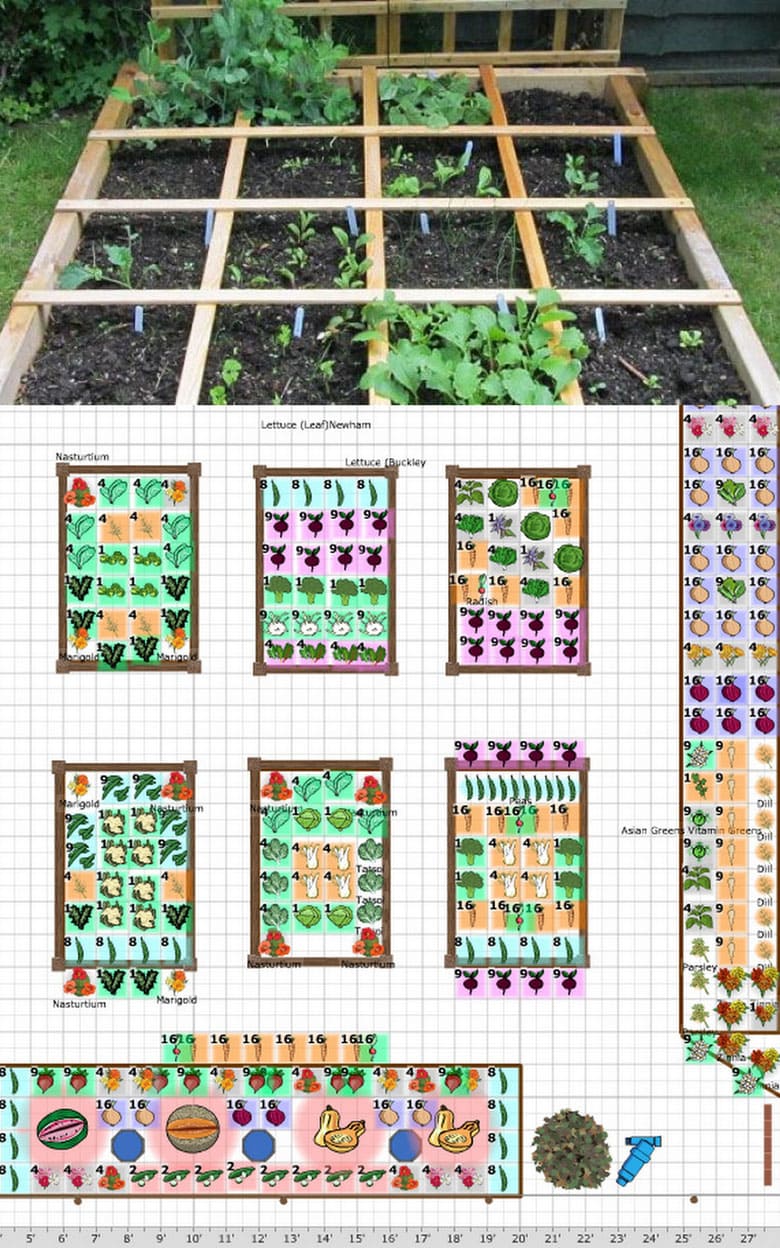
However, crop rotation or permaculture techniques, such as companion planting, usually prevent this from arising. In general, continually growing the same vegetable in the same place can encourage a build-up of soil diseases. The latter is generally recommended if you have a bigger yard so plants with similar requirements can be grown together and then rotated to different beds annually. You can create one long garden bed or plant several in your backyard. Step 2: Decide on the type of garden beds

Then place heavy material which roots cannot penetrate on the edge of the trench, then fill the channel with the barrier material (a barrier helps to prevent roots from making their way into your patch).

The trench should be deeper than the existing roots, or keep digging until you reach hard clay.
#VEGETABLE GARDEN LAYOUT PATCH#
If growing a patch away from trees is impossible, consider digging a trench around your plot. There is also the risk of the roots of nearby trees growing into your patch and harming your vegetables. Otherwise, neighbouring bushes can absorb water and soil nutrients, depriving your vegetable patch of essential ingredients. Ideally, plant your veggie patch around 3m from the drip line of trees. It is best to keep your vegetable plot away from other plants. If that’s not possible, erect a fence as a wind barrier to protect your plants. For example, you can level sloping ground by lining the base of the beds with flat rocks, wood slabs or boards. However, sloped land should not hinder growing a backyard veggie garden. In the Southern Hemisphere, the sun angles to the north, so try to put your taller plants on the south side of the garden so they don’t cast a shadow over the rest of your crop.Ī flat vegetable patch ensures that plants receive equal water and sunlight distribution. So, your plants should ideally run along a North-South axis to maximise sunlight exposure and ensure good air circulation. The direction of your veggie garden will also determine the amount of sunlight your vegetables receive. You can create some shade with netting or a wattle fence. However, strawberries or salad leaves require shade, but that’s easy to accommodate in a sunny spot. Direct sunlight helps to create disease-resistant plants and sweeter-flavoured carrots, tomatoes, chillies and onions. Pick a spot for your backyard veggie garden that receives ample natural light. Step 1: Selecting the right spot for your backyard veggie garden Vegetables love sunshineĪ patch requires at least five hours of sunlight daily.

#VEGETABLE GARDEN LAYOUT HOW TO#
If this sounds like your flavour, our how-to guide on how to make a backyard vegetable garden outlines every step, broken down into five stages: Imagine a hearty minestrone soup filled with broccoli and beans sourced solely from a backyard veggie garden. Modular Walls X CONTACT US TODAY 1300 556 957ĥ step how to guide for a backyard veggie garden 11 Mins


 0 kommentar(er)
0 kommentar(er)
